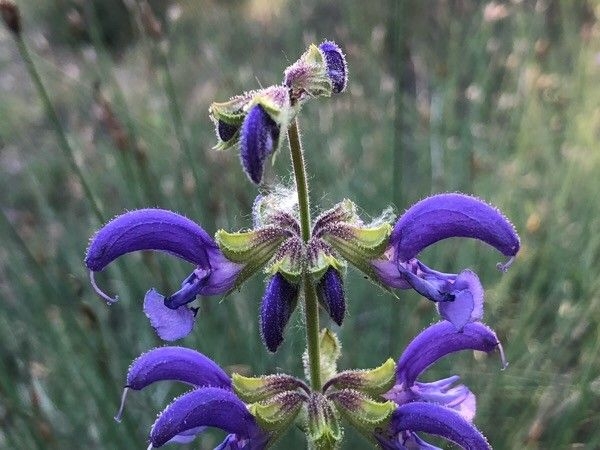Meadow Sage
(Salvia pratensis)
Meadow Sage (Salvia pratensis)
/
/

Pep Sole
CC BY-SA 4.0




















































Estimated Native Range
Summary
Meadow Sage is appreciated for its vibrant flowers and its ability to thrive in a range of garden settings. It is often used in perennial borders, wildflower meadows, and as part of naturalistic plantings. While it can tolerate periods of drought once established, it performs best with consistent moisture and well-drained soil. Full sun is ideal for promoting vigorous growth and abundant flowering. Popular cultivars include ’East Friesland’ and ’Caradonna’, which are known for their striking flower spikes and deep purple-blue blooms. Gardeners should be aware that Salvia pratensis can self-seed and spread, potentially becoming aggressive in some conditions. It is also susceptible to powdery mildew in humid climates.CC BY-SA 4.0
Plant Description
- Plant Type: Herb
- Height: 1-3 feet
- Width: 1-3 feet
- Growth Rate: Moderate
- Flower Color: Pink, Purple, White
- Flowering Season: Spring, Fall
- Leaf Retention: Deciduous
Growth Requirements
- Sun: Full Sun
- Water: Medium
- Drainage: Medium, Slow
Common Uses
Bee Garden, Bird Garden, Border Plant, Butterfly Garden, Deer Resistant, Drought Tolerant, Fragrant, Groundcover, Hummingbird Garden, Low Maintenance, Potted Plant, Rabbit Resistant, Rock Garden, Salt Tolerant, Showy Flowers, Street Planting
Natural Habitat
Native to meadows, grasslands, and edges of fields across Europe and Western Asia
Other Names
Common Names: Introduced Sage , Meadow Clary , Prairie-Meadow Sage , Eng-Salvie , Wiesen-Salbei , Niittysalvia , Sauge Des Prés , Sauge Des Près , Engsalvie , Veldsalie
Scientific Names: Salvia pratensis , Salvia minor , Gallitrichum pratense , Salvia ceratophylloides , Plethiosphace pratensis , Salvia aprica , Salvia pratensis var. caerulea , Salvia rubicunda , Sclarea pratensis
GBIF Accepted Name: Salvia pratensis L.